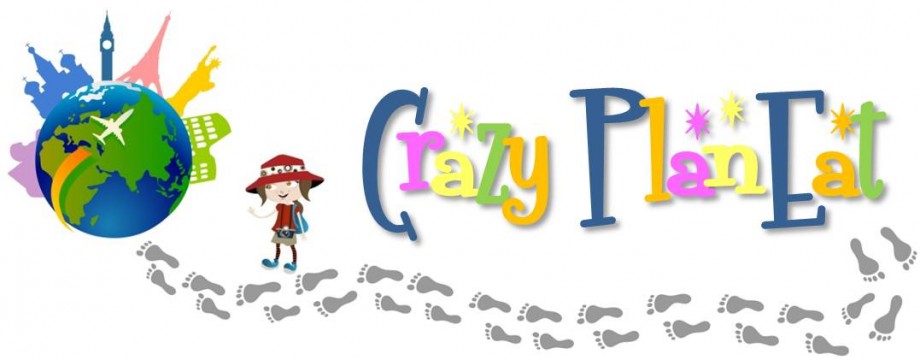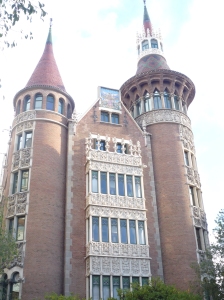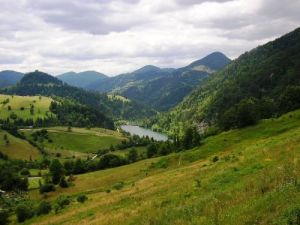“There is where it all began… There is where I understood how far I could go.”
– Pablo Picasso –
PRINT & GO
Before your departure, do not forget to check/bring with you:
– Boarding pass and hotel reservation
– Barcelona public transport map
– Barcelona tourist office website
DAY 1: VISIT BARCELONA (GAUDI SITES)
Barcelona is one of the most original cities in Europe (I would say in the world). The city can be visited with your eyes looking at the front and with the eyes looking at the sky, the “horizontal” view and the “vertical” one are different but both remarkable. The “horizontal” view will show you Barcelona’s everyday life and its great past, its small streets and its huge avenues, its way to be dark, scary, and Gothic and at the same time colorful, magic and happy. The “vertical” scenario will make you admire the stunning architecture, a great contribute to the city from Gaudi and many other remarkable architects.
Your first day in Barcelona can be dedicated to the master of the city, the architect who made Barcelona the unique wonder that is nowadays, the artist who makes us enjoy the city “horizontally” and “vertically” : Antoni Gaudi. Gaudi’s masterpieces are numerous in Barcelona but we can visit some of them in one day.
- The first place to see is definitely Park Guell. Considered as part of UNESCO heritage, this garden complex was built up at the beginning of the 20st century by request of Eusebi Guell, who wanted to create a public garden for the aristocracy. Nowadays this space is a unique fusion of nature and architecture, since it hosts fantastic architectural elements designed by Gaudi, such as the Dragon fountain at the entrance, or the balcony with colorful mosaics giving a great view on the city, or the house where the architect lived his last years (and that is nowadays a nice museum).
How to get there: Metro Line L3, stop “Lesseps”. From there, you will need to walk uphill for around 20mins.
- After a nice walk in the Park Guell, you can go back to the city to visit other Catalan Modernism wonders. Before going back to Gaudi, you should stop by Casa Terrades (known also as Casa de las Punxes), designed by Josep Puig i Cadafalch. Despite of its aspect of medieval castle, Casa Terrades is a masterpiece of Modernism.
How to get there: Metro Line L5, stop “Verdaguer”.
- From Casa Terrades, take Passeig de Gracia and you will be able to admire another wonder signed Gaudi: Casa Mila. Known also as La Pedrera, this original building respects all the aspect of the Gaudi’s Modernism: absence of straight lines and wavy movements everywhere, in the walls, in the balconies. This space is accessible for visits and hosts nowadays the Cultural Centre of Caixa de Catalunya.
How to get there: Metro line L4, stop “Passeig de Gracia”.
- La Pedrera is located in Passeig de Gracia, a huge modern avenue, plenty of high-fashion stores, bars and restaurants..it’s somehow the Champs Elysées of Barcelona. You can stop there to grab something for lunch.
- After a lunch break, keep on walking through Passeig de Gracia until you will get to Casa Batllo. This is probably one of the most beautiful Gaudi’s works: wavy lines, colorful facade, extravagant elements of decoration.
How to get there: Metro line L4, stop “Passeig de Gracia”.
- Time to leave Passeig de Gracia and visit one of the main symbols of the city: the Sagrada Familia. This is Gaudi’s biggest masterpiece, he consecrated so much time and energy to create this jewel that he died without finishing it. Honestly, I have never had the chance to see this church without the works in progress and I don’t know if I will ever have it (according to what I saw last time, there are still a lot of years left before the works are finalized), but even if half covered this church needs to be visited, outside and inside, since it’s a really unique wonder. Outside, La Sagrada Familia is a fusion of Gaudi’s architectural style and a pure representation of the symbols of the Christian’s Faith. The 18 towers indicates the 12 Apostles, the 4 Evangelists, Mary and Jesus. The facades evoke the pillars of faith and the main steps of Jesus’ life. The entrance to this church could be expensive (around 13€), but is totally worth.
How to get there: Metro line L2, stop “Sagrada Familia”
- The last Gaudi masterpiece to visit on the first day in Barcelona is Palau Guell. This is probably the building that stayed more intact inside. Outside is a show of wavy lines, with two big iron doors and 18 chimneys on the roof. Inside you can find Gaudi’s influence in the furniture, in the windows, in the stairs, in every single corner. The building is accessible for visits.
Your tour is over for the first day. Now you can go back to the hotel, take a rest, and go out again to enjoy Barcelona’s nightlife. The first night in the city can be spent in the several restaurants and cafes around La Rambla and Plaça de Catalunya.
DAY 2: VISIT BARCELONA (CIUTAT VELLA)
The second day in Barcelona can be dedicated to the visit of the most popular area, the old town.
- You can start your tour from Plaça de Catalunya. This is a massive square, surrounded by elegant 19th century buildings, park benches, pretty fountains, reflecting pools, and numerous neoclassical monuments. This is a focal point for public transportation (most of the metro and tram lines pass via “Plaça de Catalunya” stop).
- From Plaça de Catalunya, you can start walking through the most popular street in Barcelona: La Rambla. This is a 1km pedestrian street which describe two different aspects of the city. From the “in front” point of view, La Rambla is surrounded by shops, cafes, restaurants (you can have your lunch over there) and continuous animation on the streets. From the “at the sky” point of view, La Rambla is surrounded by magnificent and elegant buildings, extremely beautiful at day and at night.
How to get there: Metro line L3, stop “Liceu” or “Drassanes”
- La Rambla will take you to the city port, but, before visiting this area, you need to go back and visit one of the most attractive areas in Barcelona: the Barrio Gotico (Gothic area). This is located on one side of La Rambla and it’s the old part of the town. Very narrow streets, old and small buildings, dark corners, few lights, this is the magic of the Gothic area. Walking down these streets will take you to an enchanted world. You will feel like transported in one of Carlos Ruiz Zafon’s novels, sometimes it can be scary but attractive as well. The Gothic area has important spots, such as Plaça Reial, Plaça George Orwell, Casa de la Ciutat (Town Hall), the City Cathedral, although don’t stick on these corners only but take your time to walk and get lost in the old narrow and anonymous streets.
How to get there: Metro line L4, stop “Jaume I”
- Going out of the Gothic area, you will arrive in the Old Port area. This part of the city starts with the Mirador de Colom, a statue in honor of Columbus. In front of the statue is Mare Magnum, a modern structure that you can access via a special bridge and where you can find shops and restaurants. The inside part is not so relevant, but it is nice to have a walk till Mare Magnum and enjoy the Old Port atmosphere.
- Afterwards, have an enjoyable walk along the Old Port, through Passeig Colom, a very nice street with a lot of green space and palms everywhere. You can relax, walk under the sun and breath the fresh air of the sea.
- Passeig Colom will take you to Barceloneta. This is the area of the fishermen and is house of several fish restaurants, sandy beaches and nice cafes.
How to get there: Metro line L4, stop “Barceloneta”
The second day in Barcelona is more relaxing than the second one. For the nightlife, you can stay in Barceloneta and enjoy some delicious fish restaurants and go to one of the great night clubs.
DAY 3: VISIT BARCELONA (MONTJUIC AND MUSEUMS)
The third and last day in Barcelona can be taken very easily, you can also have a late morning and start your tour at any time you wake up.
- This time we will abandon the noise of the city to go to a quiet place: Montjuic. This is a nice hill located in the city and easily accessible through a funicular that you can take from “Parallel” Metro stop and whose ticket is the same as the city public transportation one. In less than 3 minutes you will arrive to another world, with few cars, few paths and a lot of quiet and nature, where people prefer to go on foot or by bike. Created as fortifications site, Montjuic Park has lately evolved into a vast spot filled with green areas and gardens, cultural and architectural attractions (e.g. Palau St Jordi, used for many important concerts, or the impressive Telecommunication Tower designed by Calatrava), sports facilities and Olympic sites (e.g. the Olympic stadium), all implemented during the 1929 International Exhibition and the 1992 Olympic Games. Montjuic is also home to museums, such as the Fundació Miró, the Museu d’Arqueologia, the Museu Etnològic and the Museu Nacional d’Art de Catalunya-MNAC. When you arrive at this last museum, you will admire a wonderful view on the city and mainly on Plaça de Espanya.
How to get there: for the funicular get to Metro line L2, stop “Parallel”
- From the MNAC you can take the stairs down (there is also an escalator for the lazy ones) and arrive to Plaça de Espanya, a place where many of the main roads in Barcelona intersect. It is also home to Barcelona’s old bull-fighting ring which is now nothing but a shell. Between Plaça de Espanya and Montjuic you can admire the magic fountain, an impressive fountain that creates color games during the night.
How to get there: Metro line L1,L3 and L5, stop “Espanya”
The visit of Montjuic and Plaça de Espanya will take you around half a day. You can spend the rest of your time doing something relaxing, such as shopping (Barcelona houses numerous designers’ stores, especially around the Old Town), going to the beach, or visiting some museums (Barcelona has many interesting museums, besides the ones mentioned above you can also visit the Museu d’Art Contemporani – Contemporary Art Museum, aka MACBA -, the Museu Maritim, the Museu Picasso or Museu de Ciences – Science Museum).










































































































































